Abstract
Picrate (trinitrophenol) is a unique uncoupler of oxidative phosphorylation. Unlike the commonly used uncouplers (e.g., 2,4-dinitrophenol, pentachlorophenol, m-chlorocarbonylcyanide phenylhydrazone, and 5-chloro-3-t-butyl-2′-chloro-4′-nitrosalicylanilide), picrate seems to penetrate the mitochondrial inner membrane very slowly. Consequently, it is ineffective when added to intact mitochondria or to mitochondria depleted of their outer membranes. In contrast, when added to phosphorylating submitochondrial particles prepared by sonication in which the inner membrane orientation is inside-out, picrate binds to the uncoupler-binding sites and uncouples oxidative phosphorylation. This unique property of picrate has made it possible to compare the potencies of picrate and dinitrophenol for (a) uncoupling and (b) increasing the proton permeability of submitochondrial particle vesicles. At 50% uncoupling concentration, dinitrophenol increased the proton permeability of submitochondrial particle vesicles by 9- to 12-fold. In contrast, at 100% uncoupling concentrations or higher, picrate augmented the proton permeability of the particles by only about 3-fold. These results indicate that facilitation of transmembrane proton equilibration does not determine the degree of uncoupling, and lead to the corollary conclusion that the magnitude of transmembrane proton gradient need not be the quantitative driving force for ATP synthesis.
Keywords: mitochondria, anisotropic uncoupling, uncoupler-binding sites, transmembrane proton gradient
Full text
PDF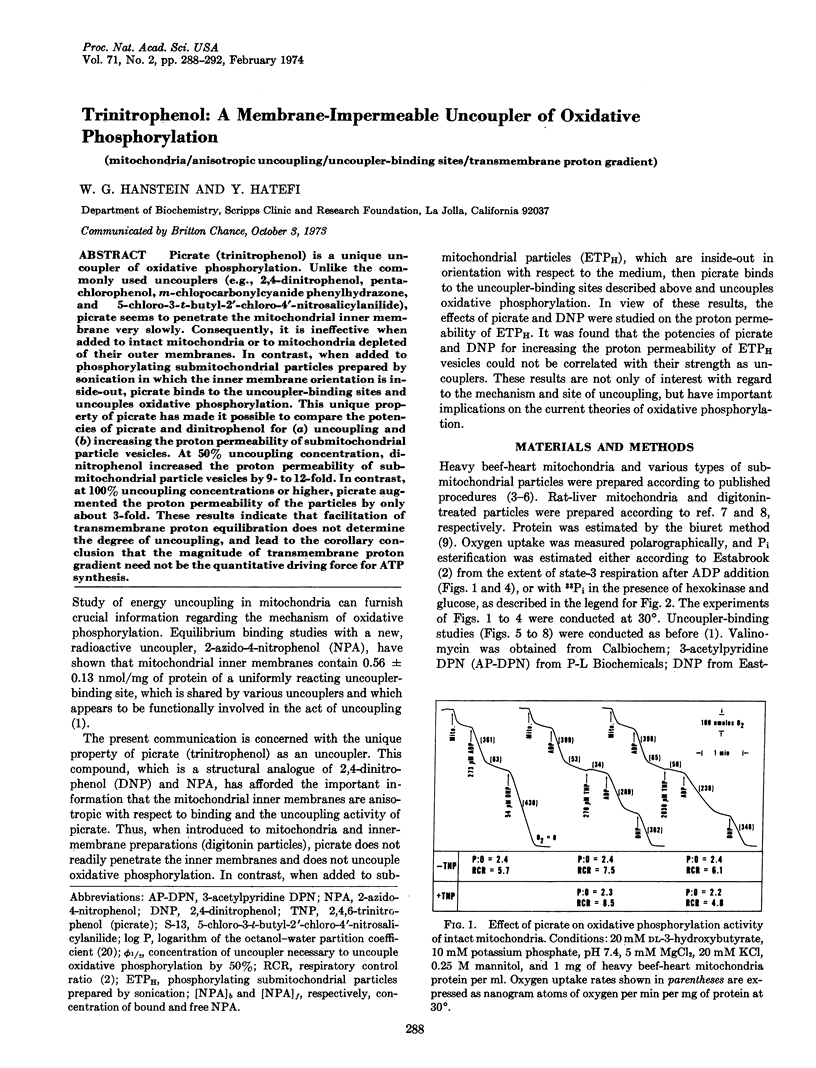
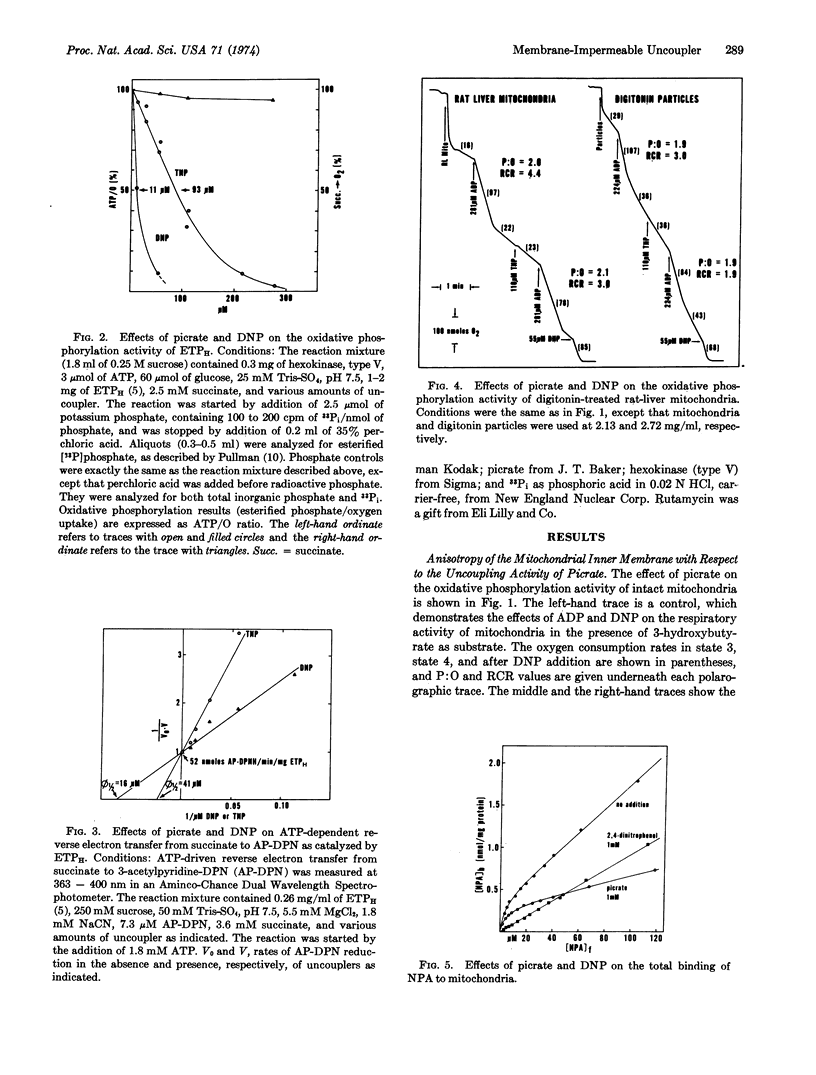
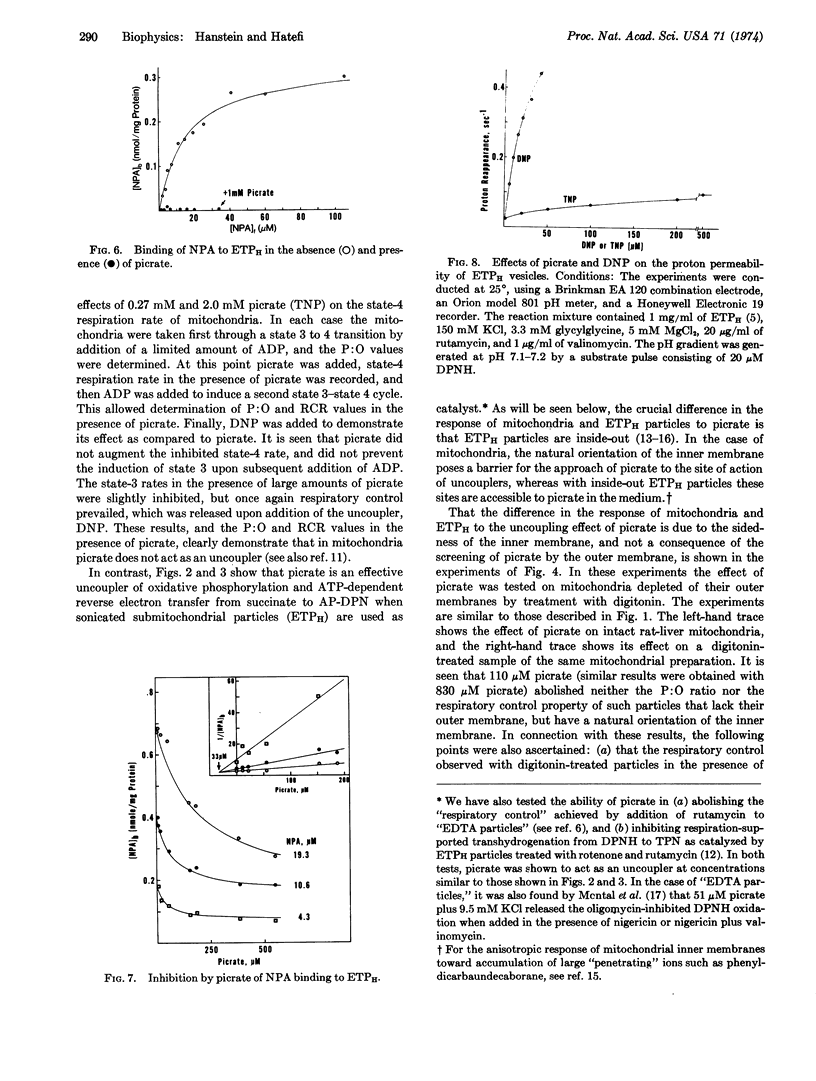
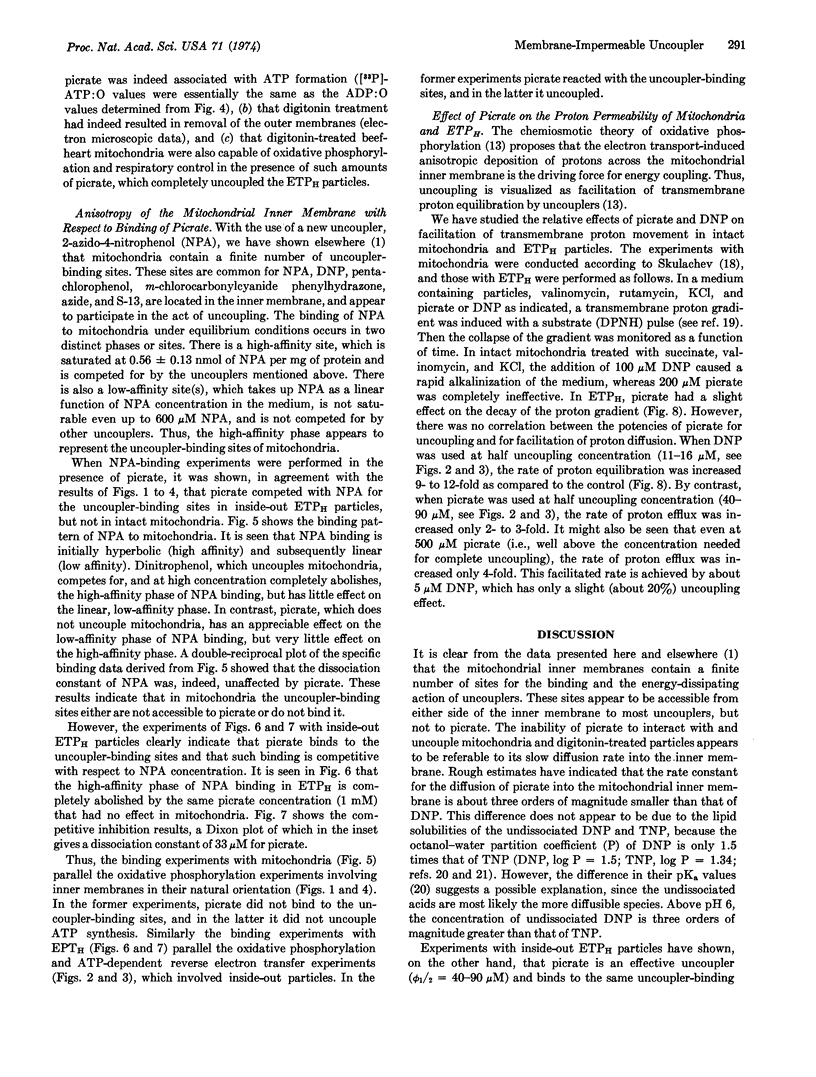
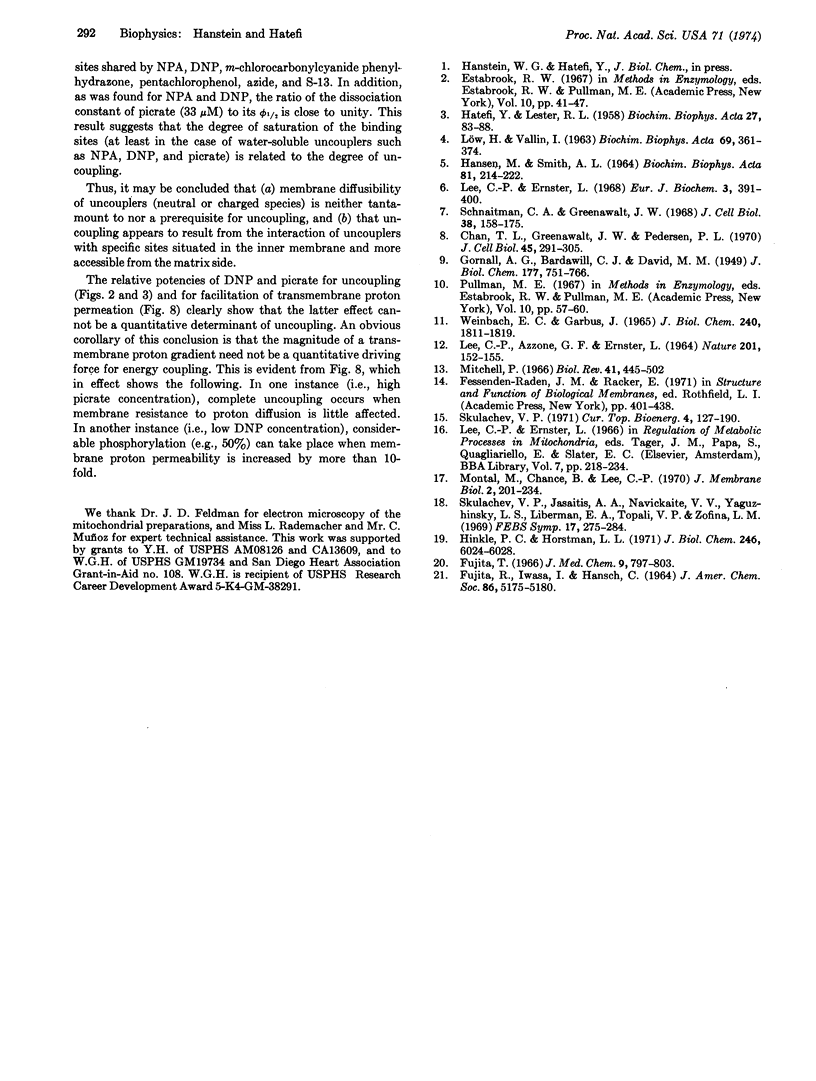
Selected References
These references are in PubMed. This may not be the complete list of references from this article.
- Chan T. L., Greenawalt J. W., Pedersen P. L. Biochemical and ultrastructural properties of a mitochondrial inner membrane fraction deficient in outer membrane and matrix activities. J Cell Biol. 1970 May;45(2):291–305. doi: 10.1083/jcb.45.2.291. [DOI] [PMC free article] [PubMed] [Google Scholar]
- Fujita T. The analysis of physiological activity of substituted phenols with substituent constants. J Med Chem. 1966 Nov;9(6):797–803. doi: 10.1021/jm00324a001. [DOI] [PubMed] [Google Scholar]
- HATEFI Y., LESTER R. L. Studies on the mechanism of oxidative phosphorylation. III. Phosphorylating particle types from beef heart. Biochim Biophys Acta. 1958 Jan;27(1):83–88. doi: 10.1016/0006-3002(58)90294-4. [DOI] [PubMed] [Google Scholar]
- Hinkle P. C., Horstman L. L. Respiration-driven proton transport in submitochondrial particles. J Biol Chem. 1971 Oct 10;246(19):6024–6028. [PubMed] [Google Scholar]
- LEE C. P., AZZONE G. F., ERNSTER L. EVIDENCE FOR ENERGY-COUPLING IN NON-PHOSPHORYLATING ELECTRON TRANSPORT PARTICLES FROM BEEF-HEART MITOCHONDRIA. Nature. 1964 Jan 11;201:152–155. doi: 10.1038/201152a0. [DOI] [PubMed] [Google Scholar]
- Lee C., Ernster L. Studies of the energy-transfer system of submitochondrial particles. 2. Effects of oligomycin and aurovertin. Eur J Biochem. 1968 Feb;3(4):391–400. doi: 10.1111/j.1432-1033.1967.tb19542.x. [DOI] [PubMed] [Google Scholar]
- Mitchell P. Chemiosmotic coupling in oxidative and photosynthetic phosphorylation. Biol Rev Camb Philos Soc. 1966 Aug;41(3):445–502. doi: 10.1111/j.1469-185x.1966.tb01501.x. [DOI] [PubMed] [Google Scholar]
- Schnaitman C., Greenawalt J. W. Enzymatic properties of the inner and outer membranes of rat liver mitochondria. J Cell Biol. 1968 Jul;38(1):158–175. doi: 10.1083/jcb.38.1.158. [DOI] [PMC free article] [PubMed] [Google Scholar]
- WEINBACH E. C., GARBUS J. THE INTERACTION OF UNCOUPLING PHENOLS WITH MITOCHONDRIA AND WITH MITOCHONDRIAL PROTEIN. J Biol Chem. 1965 Apr;240:1811–1819. [PubMed] [Google Scholar]


